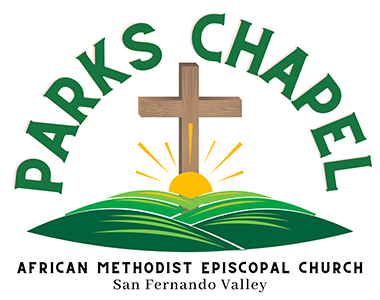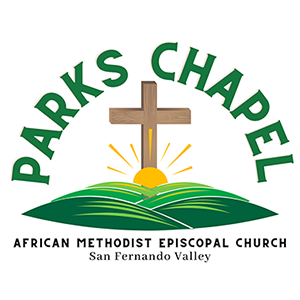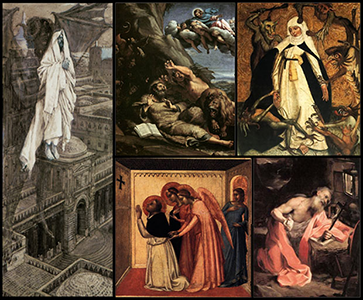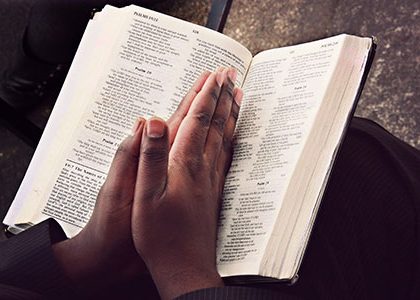For 70 years What Has Been Parks Chapel AME Church’s story?
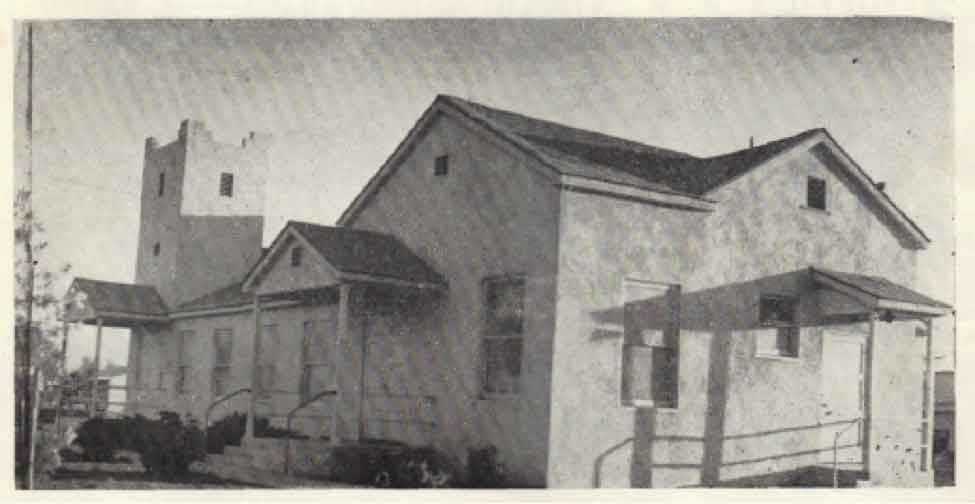
For 70 years what has been our story?
Reply:
A response to such a permeating question could only be attempted with both a respectful and reverent approach and with a deep sense of inadequacy, even in summarizing the 70 year history of Parks Chapel African Methodist Episcopal Church. It is a momentous story which could only successfully be conveyed by an understanding of what is meant by “connection”. An analogy is appropriate here to help understand how “connection” is an essential part in understanding the history of Parks Chapel AME Church, or any church or entity developed over decades or centuries for that matter.
Prologue:
Langston Hughes the great American Literary icon was always writing about the life and times of African American people. The first published poem which started his great literary career was “The Negro Speaks of Rivers”. He wrote it while on a cross country train trip visiting his father in Mexico City, Mexico. His inspiration came, when the train was in the delta area and crossing the Mighty Mississippi River. History may be read, but one can only understand it, my getting into it.
In commentary on the poem, Hughes reflected on the moment he first saw the many churning muddy hues of the Mississippi River. His mind recounted the stories his grandmother had told him about slavery and how terrible it was for a slave to be sold down the Mississippi River. Mr. Hughes did not get out of the train and get into to the river, in order to understand the history and significance of it; he rather used the history books and his familiar stories about the river to compose his great and enduring verses…
“I’ve known rivers ancient as the world and older than the flow of human blood in human veins. My soul has grown deep like the rivers. I bathed in the Euphrates when dawns were young. I built my hut near the Congo and it lulled me to sleep.”
Had Mr. Hughes placed one foot into the River, removed his foot and placed it in the river again, he would have experiences another river. This is the concept addressed by the Philosopher Heraclitus…
“No man ever steps in the same river twice, for it’s not the same river and he’s not the same man”.
This superlative thought shows the ebb and flow and the constant changing winds of “Time” as it winds through the space-time continuum, as does a rolling river through a continent. An “Institution” and in this case, a church, emplaced in time by God, is like a river “connecting” its people, with places in time and with its “Doctrine”; rolling through its outreaches… nourishing, fertilizing, flooding the surrounding fields and lands with the “Potent and True” Word of God, the Gospel of Jesus Christ.
And so that begins the history of Parks Chapel AME Church. Parks shares a common story, a connected story, repeated time and again in the history of our country of Church and State. And it is the story of the African Methodist Episcopal Church and churches and people the world over. The need to find a place to “freely” worship God in spirit and in truth, birthed the AME Church and so were the beginnings of Parks Chapel the only AME Church in the San Fernando Valley, “a rolling river through the Valley with its changing faces over its appointed times”.
Scripture:
[Psalm 107, 1-7] “1 Oh give thanks to the Lord, for he is good, for his steadfast love endures forever! 2 Let the redeemed of the Lord say so, whom he has redeemed from trouble, 3 and gathered in from the lands, from the east and from the west, from the north and from the south. 4 Some wandered in desert wastes, finding no way to a city to dwell in; 5 hungry and thirsty, their soul fainted within them. 6 Then they cried to the Lord in their trouble, and he delivered them from their distress. 7 He led them by a straight way till they reached a city to dwell in.” (ESV)
Discussion:
The verses from Psalm 107:1-7, is a perfect scripture to begin the history and even the current state of Parks Chapel AME Church. The Psalm is encouraging the reader, that thanks be given to the Lord for the love and care which he has always provided [in the past, present and future]. Now, who is the Psalm encouraging to give thanks to the Lord? Yes, “the redeemed of the Lord”. Now who are the “redeemed” of the Lord? The nation of Israel, correct? No, “the redeemed of the Lord” here, applies to anyone who meets the following conditions.
The conditions are: those whom he has redeemed from trouble, and those he has gathered in from the various parts of the immediate country and from all over the world {from the east, west, north and south}. Here, the reader of the passage would need to assess, if he or she has ever been delivered from troubles by the Lord. My own interpretation of this passage, is that anyone who has prayed (in ignorance or in understanding) to the Lord and that prayer was answered, those persons are “the redeemed of the Lord”. Those persons are to give continuous thanks to the Lord.
Continuing with this thought, if a person (young or old) understands that God has answered a prayer that they have prayed to Him, then they would understand that they have found a source of help, of comfort “a solace”, a resting place or even a process where they can return to and reside or live in. Those who find God in this way, through answered prayers, are the ones who should give thanks to the Lord.
The second condition in the Psalm is not so much as condition, as it is an effect or something which occurs as a consequence. In this case the consequence is a gathering by the Lord, of those who have found a resting place in God, in the knowledge that he is a source of continued help in life. Discovering such, one would certainly want to continue their relationship with God in the way that he has set forth, that they should. Foremost in the mind of one who believes the Lord, through answered prayer, would be the seeking out of a place of worship; where they could learn and understand what God requires of them, as they are now “the redeemed of the Lord”. Redeemed means that he has saved them from the troubles and consequences they pray about and others unseen. When a person is redeemed they owe something to the one who redeemed or saved them.
In the 107th Psalm (as in others also) God is providing instructions (through the psalmist) that those who have receive from Him, should give him thanks because he has saved them from whatever troubles they prayed about.
Giving thanks means to 1) praise the Lord; by saying what great things he has delivered you from, 2) by offering worship, after deliverance, and 3) by continued prayer; these actions are what is called “thanksgiving”. In our prayers, we thank God for what he has done for us, and what he will do for us all of our days. For now (in Him) we have a steadfast hope, a Living God to pray to continually. But we need a place to do it. Publicly praising God in all that we do is required and is the foremost expression of our belief and our faith in God through Jesus Christ; Christ who is the agent or mediator and the reason for which God saved us.
God in past times, as we see with the Nation of Israel, gathered His publicly wandering people into a Nation and then gave them a land, which he had promised faithful Abraham (the father of the Jewish people) that he would give to his descendants. God fulfilled that promise by bringing the Israelites out of Egypt and into the “Promised Land”. In the miraculous forty year journey to that Promised Land, God saved them from dangers seen and unseen, healed them (often in miraculous ways), fed them, and even caused their shoes never to wear out, in all that time.
On the journey, he began to teach the people of how they were to worship him, including the articles of worship, the words, and the spirit in which worship was to be offered to a Holy God, and provided priests to lead them in the same. There in the Promised Land, he gave them houses already built and great places (cities, towns, buildings, pastures, fields, vineyards and flocks) that were in move-in-ready condition, abandoned by people fleeing the land to avoid the clash with “God’s People”. Other cities and hamlets were fought for in battles; but the bibles states that God did the fighting on Israel’s behalf. And all of this for the purpose of gathering His “sanctified (set apart) people” to Himself in order that they would worship him freely in spirit and in truth, having seen what great things he had done for them.
That is the “gathering in” by God, spoken of in Psalm 107 verses 3-7; he had done for the people of Israel. However, the Psalm, as most of God’s word, is not exclusively to the Jewish Nation. This principle is given to all of God’s people. To all who call upon the Mighty Name of God, through Jesus Christ, this gathering principal and other Christian principles are given. And for those who call upon God, through Jesus the Christ, as previously stated, publicly praising and open worship of God is the main expression of our belief, because we are not to hide our light under a basket, but shine forth brightly, so all can see and know what God is doing in our lives.
God sanctifies the souls of believers, though in the world, we are not seen my God in the same way, that he sees the people of the world who do not believe in him through Christ. Along with the call to sanctification, God has called His people into worship gatherings in our local churches. There we learn from faithful men and women in those activities gifted by Christ in the local church, how to more perfectly serve him; and there within we are provided glimpses into the Great Heavenly Worship of God, in which we will one day participate, as citizens of Heaven.
So the rescue that God has undertaken is to deliver our souls from bondage to the World and Satan to an eternal home. Psalm 91 provides the principles to us in a clear way, “He who dwells in the secret place of the Most High Shall abide under the shadow of the Almighty. I will say of the Lord, “He is my refuge and my fortress; My God, in Him I will trust.” Surely He shall deliver you from the snare of the fowler and from the perilous pestilence.” (NIV)
God also delivers us from our wanderings as provided in Psalms 107, 4 Some wandered in desert wastes, finding no way to a city to dwell in; 5 hungry and thirsty, their soul fainted within them. 6 Then they cried to the Lord in their trouble, and he delivered them from their distress. 7 He led them by a straight way till they reached a city to dwell in.” (ESV)
Similarly, the history of Parks Chapel begins with God gathering, leading people form several areas of the country, who did not have a place to worship, but their souls were weary and faint and these many people across seven decades, cried out to God and asked Him for a place to worship in. He answered their cry and pitied every groan; God led the founders of Parks Chapel and those later to come, lo over these seven decades, as it were “straight way” till we reached a place to worship in.
PARKS CHAPEL A.M.E. CHURCH EARLY HISTORY:
PARKS CHAPEL A.M.E. CHURCH
A look into the past. A vision of the future.
As told by Curtis and Madell Steiner
By: Hazel W. Spicer, Historian (1981)
How did PARKS CHAPEL A.M.E. CHURCH come into being?
In 1948, Rev. Owens, a San Fernando resident, realized the need for an A.M.E. Church in Pacoima, and  suggested to his good Christian friend, Rev. S. W. Ford that he explore the idea of beginning an A.M.E. Mission in Pacoima.
suggested to his good Christian friend, Rev. S. W. Ford that he explore the idea of beginning an A.M.E. Mission in Pacoima.
In addition to being a San Fernando resident, Rev. Owens was also a Presiding Elder of a Northern California Region, and realized he could not service the A.M.E. spiritual needs of both communities.
Thus, in February 1948, after prayerful meditation, Rev. Ford immediately accepted his friend’s offer of bus transportation from Los Angeles to Pacoima to explore the possibility of an A.M.E. Mission in that location. Upon his arrival in Pacoima, Rev. Ford disembarked from his bus at the intersection of San Fernando Road and Van Nuys Boulevard, suitcase in hand, and began making inquiries of local residents about possible A.M.E. Christians.
Rev. Ford was then directed to a Dorothy Mitchell who lived on Pinney Street. Mrs. Mitchell, a C.M.E., took Rev. Ford, again suitcase in hand, to the residence of Curtis and Madell Steiner, (then) located at 13166 Filmore Street.
Introductions were made and when Mrs. Mitchell left, Rev. Ford was unpacking his suitcase as he had been offered the hospitality of the Curtis Steiner home for the weekend. Do you have five Christian friends that will support you on one day’s notice? Curtis and Madell Steiner did. It was with the aid of their five A.M.E. Christian friends that the Steiners established the FIRST A.M.E. CHURCH OF PACOIMA, presently Parks Chapel A.M.E. Church.
Thus, in February, 1948, Parks Chapel A.M.E. Church had its beginning at 13166 Filmore Street, Pacoima, in the home of Curtis and Madell Steiner and with seven members present worshipping under the leadership of their first minister, Rev. S.W. Ford.
The first Sunday School Students were: Bobby Fowler, Moses Fowler, Harry Kelly, Jr., Beverly Kelly, Michael Clark, John George, Cynthia Nalls, Gloria Nalls, Skippy Nalls, Mark Nalls and Danny Barrigan.
During the first seven or eight months of worship, Sunday School Church Services were held on a rotational basis at the home of Curtis and Madell Steiner and at the home of Mr. and Mrs. Harry Kelly on Bradley Street. Sunday school and Church membership grew rapidly and the Steiner and Kelly homes became too small for a satisfactory sanctuary place of worship.
In 1948, the later home of the Steiners, located at 13208 Lovre Street, Pacoima, was a vacant lot. This lot was then owned by Mr. and Mrs. Curtis Steiner. Realizing the need for a larger sanctuary, the Steiners offered the use of the vacant lot as a temporary sanctuary location.
Thus with the offer of the use of a vacant lot, the Trustees agreed to purchase a tent to be used as a temporary sanctuary.
Mr. Curtis Steiner built the first church pews that were used for the temporary location of the Sanctuary and later Rev. Runyon donated cushioned theater seats.
Mr. Steiner purchases the first piano from a newspaper advertisement and donated it for the congregation’s use for congregational singing. Prayer meetings were held regularly on Wednesday nights and are still held weekly today.
The original Priscilla Hawkins Missionary Society met on Friday nights for their quilting bee. Proceeds from the raffled quilts went into a building fund for a permanent location. By this time, Rev. Ford’s health had begun to decline and in September of the 1948 conference year, Rev. B.E. Edwards was sent to replace Rev. Ford. Mr. Curtis Steiner served as our first conference delegate in 1948. Shortly thereafter, Rev. Ford, the first minister became ill. Rev. Ford was hospitalized for a time at Olive View Hospital and expired after a lingering illness, thereby becoming the first death to beset the congregation.
The building fund that had begun to grow under the leadership of Rev. Ford continued to grow under the leadership of Rev. Edwards, and in 1949, the Bradford Street property was purchased as a building site for the church. In the conference year of 1950, Rev. C.C. Davidson was sent by the A.M.E. Fifth District Conference to serve as the new pastor.
In 1952, Bishop Walker suggested a change to honor Bishop Henry Blanton Parks, 32nd Bishop of the A.M.E. Church. Bishop Parks was elected in 1908 serving in the South and West. He served the Fifth Episcopal District 1924-1936, and was the first Bishop to establish his Episcopal Residence on the West Coast, thus we became PARKS CHAPEL, A.M.E. CHURCH.
The first permanent building was a church of nationwide fame. The church was the building of the Congregational Community Church that had been on the Southeast corner of Van Nuys and Laurel Canyon. This Congregational Church received nationwide recognition in the October 13th, 1951 issue of the Saturday Evening Post when the author, Darrell Berrigan, a former Pacoima resident, returned home 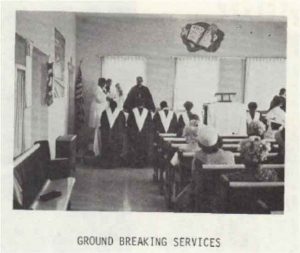 and the congregation watching the church being moved to 11155 Bradley Avenue. This is recorded in the Pacoima Post, dated Thursday October 11, 1951.
and the congregation watching the church being moved to 11155 Bradley Avenue. This is recorded in the Pacoima Post, dated Thursday October 11, 1951.
The 1948 vision of Rev. Owens of a need for an A.M.E. place of worship had become a reality.
In the conference year of 1951, the Annual Conference of the A.M.E Fifth District loaned Parks Chapel $4,000 to help remodel the wooden structure. Broadway Federal also loaned Parks Chapel $6,000 toward its remodeling goals. With the remodeling completed, and the pink stuccoed exterior, Parks Chapel became known as the “Little Pink Church” on Bradley Street. Over 20 years later the then manager of Broadway Federal’s sister Mrs. Grace Kyle, became First Lady of Parks Chapel during her husband Dwight V. Kyle’s ministry.
To be assured that there would be enough funds to make all loan payment, the Parks Chapel membership held a monthly business meeting and all members sacrificed to make certain all payments were made when due. In 1952, during the Annual Conference, the $4,000 debt was canceled, leaving only the bank obligation.

The “Little Pink Church” on Bradley Street
The “Little Pink Church” on Bradley Street
